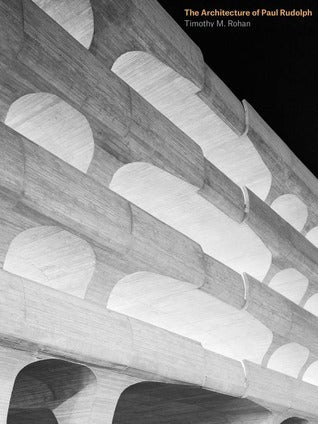-

A note on book covers: while we do our best to ensure the accuracy of cover images, ISBNs may at times be reused for different editions of the same title which may hence appear as a different cover.
The Architecture of Paul Rudolph
The Architecture of Paul Rudolph
Couldn't load pickup availability
Equally admired and maligned for his remarkable Brutalist buildings, Paul Rudolph (1918–1997) shaped both late modernist architecture and a generation of architects while chairing Yale’s department of architecture from 1958 to 1965. Based on extensive archival research and unpublished materials, The Architecture of Paul Rudolph is the first in-depth study of the architect, neglected since his postwar zenith.
Author Timothy M. Rohan unearths the ideas that informed Rudolph’s architecture, from his Florida beach houses of the 1940s to his concrete buildings of the 1960s to his lesser-known East Asian skyscrapers of the 1990s. Situating Rudolph within the architectural discourse of his day, Rohan shows how Rudolph countered the perceived monotony of mid-century modernism with a dramatically expressive architecture for postwar America, exemplified by his Yale Art and Architecture Building of 1963, famously clad in corrugated concrete. The fascinating story of Rudolph’s spectacular rise and fall considerably deepens longstanding conceptions about postwar Rudolph emerges as a pivotal figure who anticipated new directions for architecture, ranging from postmodernism to sustainability.
Details of Book
A note on book covers: while we do our best to ensure the accuracy of cover images, ISBNs may at times be reused for different editions of the same title which may hence appear as a different cover.

-
One Line Summary
Explores bold, innovative architect Paul Rudolph's lasting legacy.
-
Who is this book for?
If you're curious about avant-garde architecture and the mind behind iconic brutalist designs, this book offers an insightful journey into Paul Rudolph's innovative world. It unpacks how Rudolph challenged conventions, blending raw materials with expressive forms that continue to influence architecture today. For those interested in the evolution of modernist buildings and architectural history, this detailed study is a must-read.

